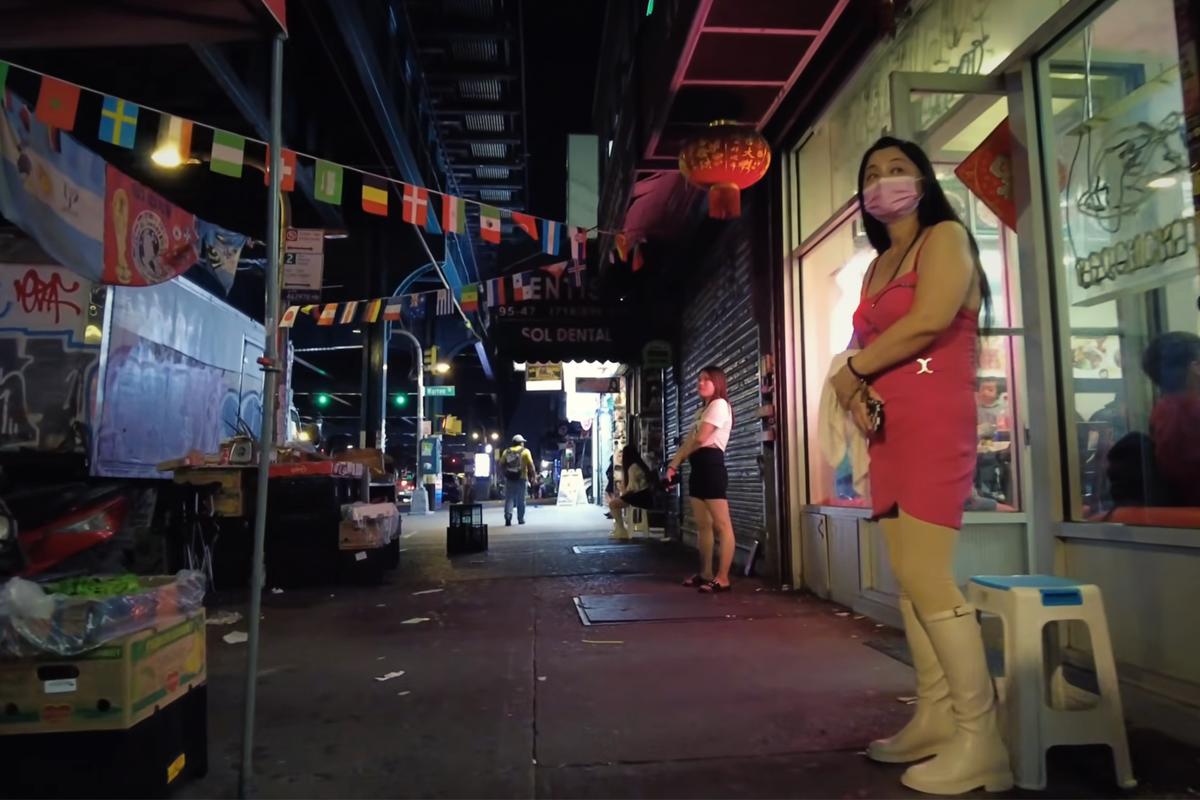Roosevelt Avenue in Queens, New York, is a corridor of rust and iron and two-level storefronts. There are travel agencies and gynaecologists, immigration law firms and dance studios. During the day, old men play dominoes in the sun. At night, women work from the curb selling fruits, haircuts, incense, and $40 masajes.
The street runs through Jackson Heights, Corona, and Flushing, a stretch often described as the most diverse in America. More than 167 languages are spoken in Jackson Heights alone; the only English you’re likely to hear is over a subway announcement.
Look at this and you might see an emblem of a city of immigrants trying a hundred ways to make a living. Or you might see a den of iniquity, a red-light district, a disorderly scene of the city’s neglect. However you view it, ahead of next week’s mayoral election, Roosevelt Avenue has become a proving ground for both Mayor Eric Adams’s record and his challengers’ visions of the city. And chief among those challengers is Democratic frontrunner Zohran Mamdani, who has supported decriminalising prostitution.
“Roosevelt Avenue is the new frontier,” shouts Hiram Monserrate, a long-time resident, over the roar of the subway. “Some would have it be the Wild West, where brothels and drug dealers bring us down. We will not accept that.”
Monserrate is an unlikely moral crusader: a former state senator expelled from office after convictions for domestic abuse and fraud. Yet alongside Dominican community leader Ramón Ramirez, he is leading calls in the neighbourhood for police and political intervention. The Let’s Restore Roosevelt Coalition have even taken to infiltrating the massage parlours themselves; filming and exposing the workers to direct the police to specific locations. After a year, they still convene on Sundays at intersections, stairwells, anywhere they can find space to call for more law and order.
At one such intersection last October, Mayor Eric Adams obliged. Surrounded by NYPD officers, he launched “Operation Restore Roosevelt”, dispatching 200 police officers to “bring dignity and safety to hard-working immigrant families”. A week later, the plaza filled again — this time with protesters denouncing the raids as an assault on their community.
Roosevelt — or La Rusbel, or Roosey — is always changing. Try to define it as one thing, and it’s already something else. The one constant is that it has always belonged to immigrants. In the early 20th century, a couple of hundred acres of empty farmland became a planned enclave for the city’s middle class. Its first residents were 98% white and European, but by the ‘90s, city planners were calling it “perhaps the most ethnically mixed community in the world”.
Diversity brought with it a kind of informality, and when Rudy Giuliani kicked the sex trade out of Times Square in the ‘90s, it hopped on the 7 train and migrated east to Roosevelt. According to local archives, around 70 businesses offered “sexual services” by 1992.
That same year, Ramón Ramirez arrived from the Dominican Republic and made his home on Roosevelt Avenue. Back then, he barely noticed the sex trade. He liked the area, he says. It felt safe and familiar. He could speak Spanish with his neighbours. He felt so attached to the place, he even ran for State Assembly (albeit unsuccessfully).
Hello! Sorry to interrupt.
To read the rest of this article, you’ll need to become a paid member. Stories like this demand weeks of reporting, writing and editing — and paid subscriptions are what make that possible.
If you believe in what Dispatch is doing, consider joining today with 75% off three months — that’s less than £2 a month.
And if that’s still too much, get in touch. We don't want to exclude anyone.
